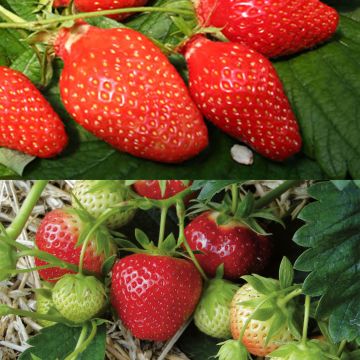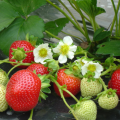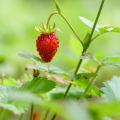Wild Strawberries
Does this plant fit my garden? Set up your Plantfit profile →
Available in 2 sizes
Available in 1 sizes
Available in 1 sizes
Our range of Wild Strawberries. The wild strawberry, or Fragaria vesca, is a perennial plant that is charming with its small red fruits and unique fragrance. The most well-known variety of wild strawberry, 'Alexandria', produces delicious and abundant fruits throughout the summer. 'Queen of the Valleys', also very popular, is distinguished by its generous flowering and pronounced taste. 'Baron Solemacher' is another prized variety, without runners, ideal for cultivation in pots or containers. These wild strawberries are perfect for gardens, balconies, and vegetable gardens, bringing a gourmet and aesthetic touch.
The wild strawberry, Fragaria vesca, is a native species in Europe, Asia, and North America. It naturally grows in undergrowth, forest edges, and shaded meadows. Its small white flowers appear from May to July. This little strawberry is famous for its fragrance.
Wild strawberries prefer humus-bearing, moist, and well-drained soil, with a sunny or semi-shaded exposure. They require regular watering, especially during the fruiting period, and mulching to retain soil moisture. Plant in spring or autumn, spacing the plants 20 to 30 cm apart. In case of high heat, make sure to provide slight shade to the plants to avoid water stress.
Haven't found what you were looking for?







































